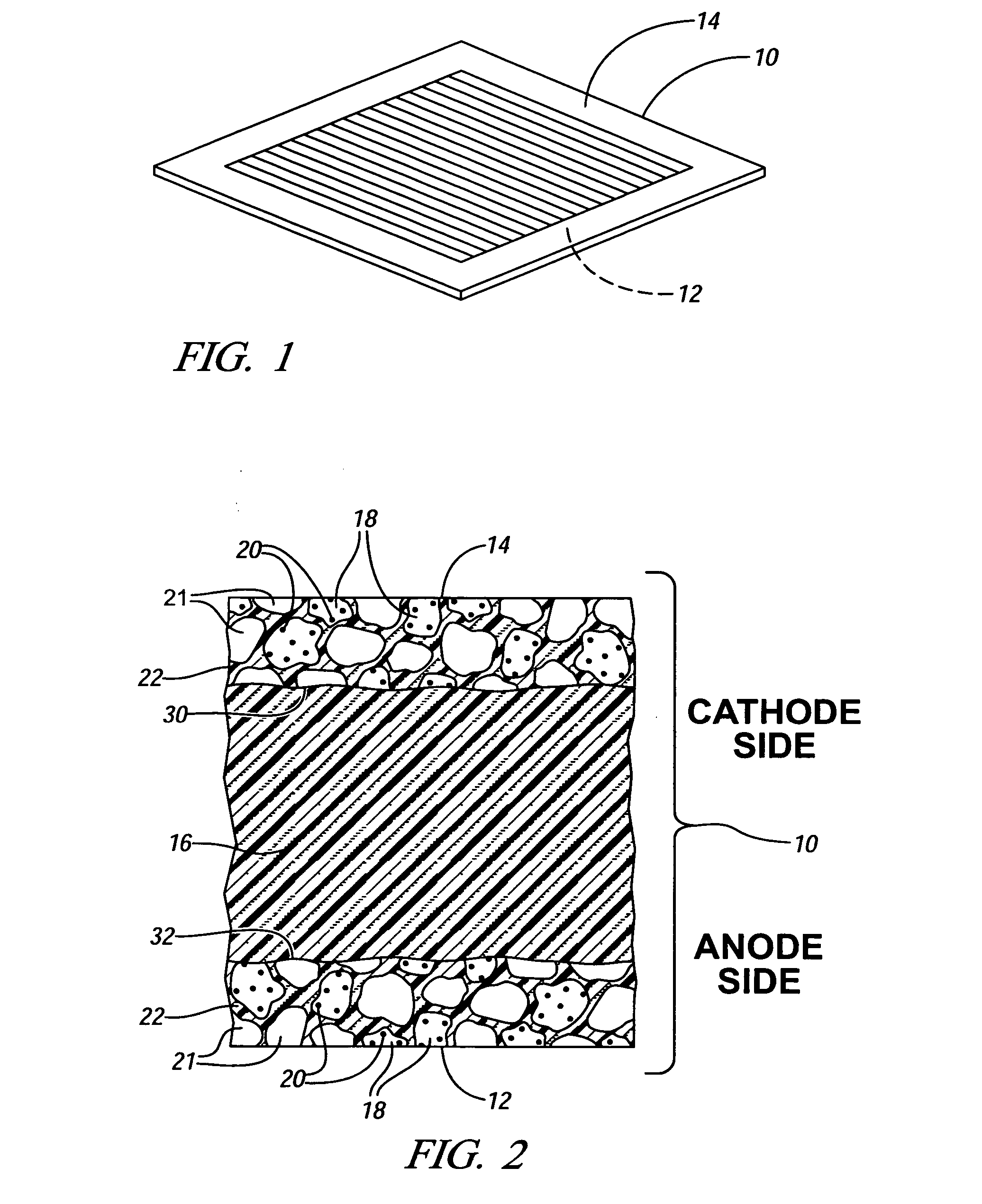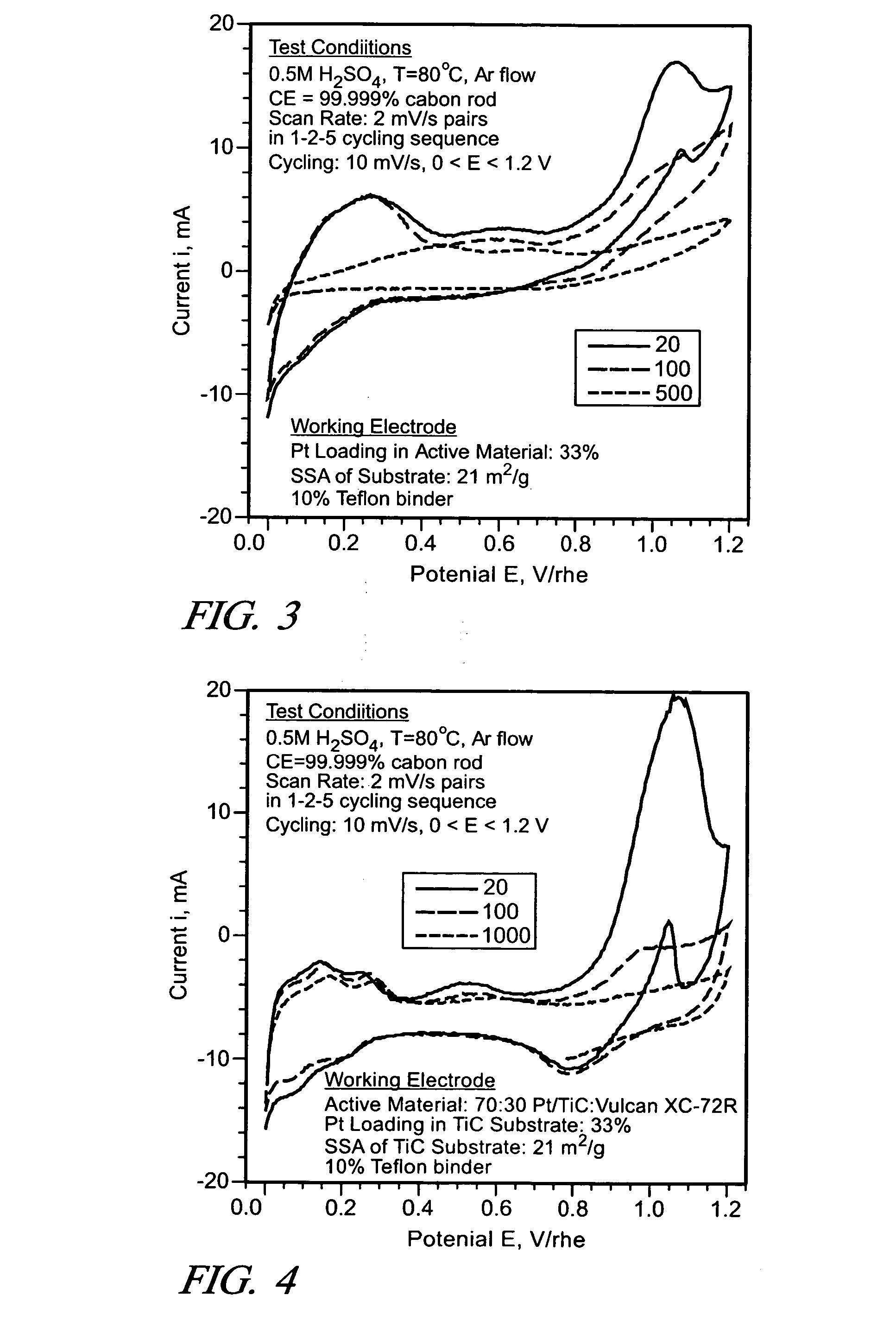Supports for fuel cell catalysts
- Summary
- Abstract
- Description
- Claims
- Application Information
AI Technical Summary
Benefits of technology
Problems solved by technology
Method used
Image
Examples
Embodiment Construction
[0018] Many United States patents assigned to the assignee of this invention describe electrochemical fuel cell assemblies having an assembly of a solid polymer electrolyte membrane and electrode assembly. For example, FIGS. 1-4 of U.S. Pat. No. 6,277,513 include such a description, and the specification and drawings of that patent are incorporated into this specification by reference.
[0019]FIG. 1 of this application illustrates a membrane electrode assembly 10 which is a part of the electrochemical cell illustrated in FIG. 1 of the +'513 patent. Referring to FIG. 1 of this specification, membrane electrode assembly10 includes anode 12 and cathode 14. In a hydrogen / oxygen (air) fuel cell, for example, hydrogen is oxidized to H+ (proton) at the anode 12 and oxygen is reduced to water at the cathode 14.
[0020]FIG. 2 provides a greatly enlarged, fragmentary, cross-sectional view of the membrane electrode assembly 10 shown in FIG. 1. In FIG. 2, anode 12 and cathode 14 are applied to op...
PUM
| Property | Measurement | Unit |
|---|---|---|
| Temperature | aaaaa | aaaaa |
| Durability | aaaaa | aaaaa |
| Corrosion resistance | aaaaa | aaaaa |
Abstract
Description
Claims
Application Information
 Login to View More
Login to View More - R&D
- Intellectual Property
- Life Sciences
- Materials
- Tech Scout
- Unparalleled Data Quality
- Higher Quality Content
- 60% Fewer Hallucinations
Browse by: Latest US Patents, China's latest patents, Technical Efficacy Thesaurus, Application Domain, Technology Topic, Popular Technical Reports.
© 2025 PatSnap. All rights reserved.Legal|Privacy policy|Modern Slavery Act Transparency Statement|Sitemap|About US| Contact US: help@patsnap.com



